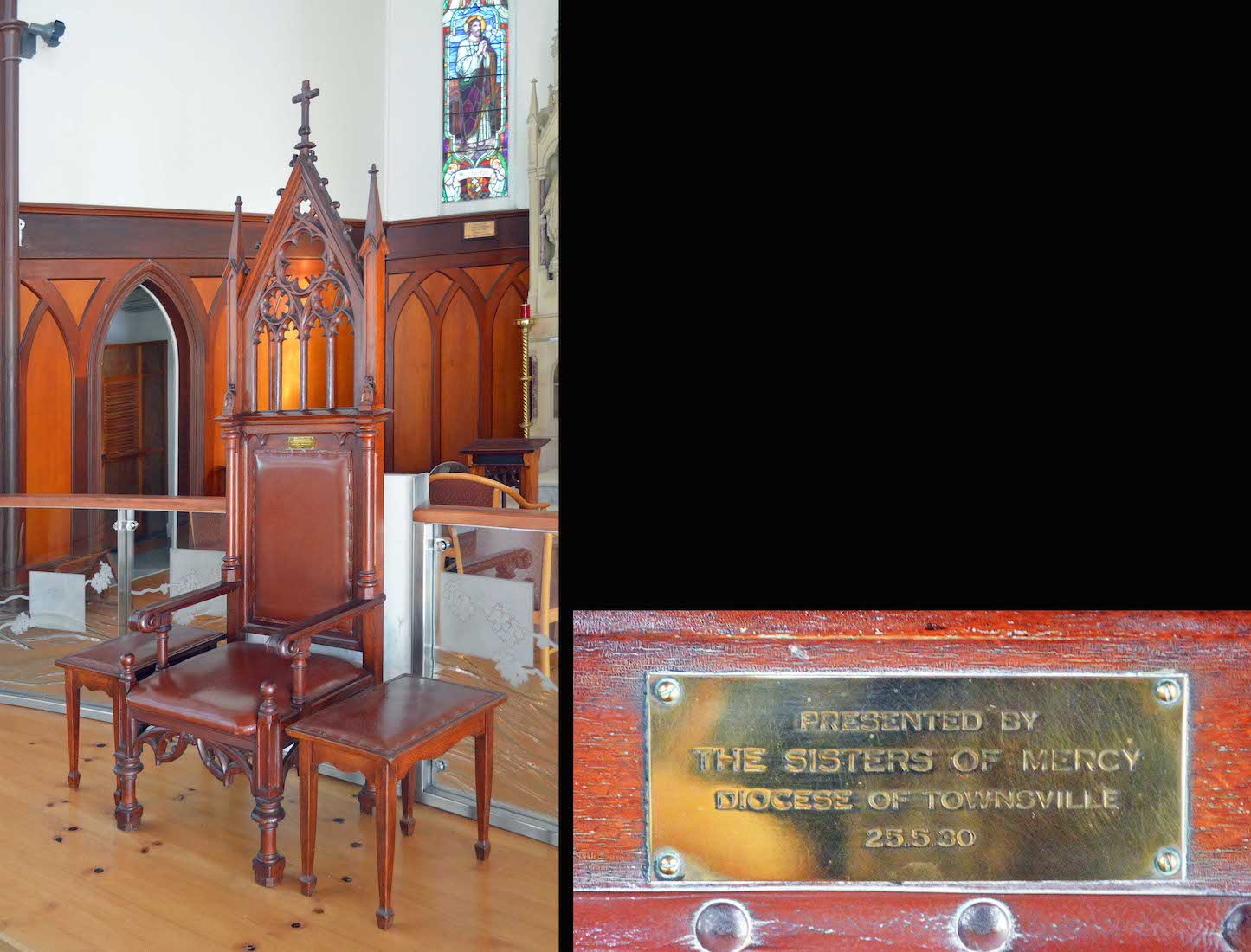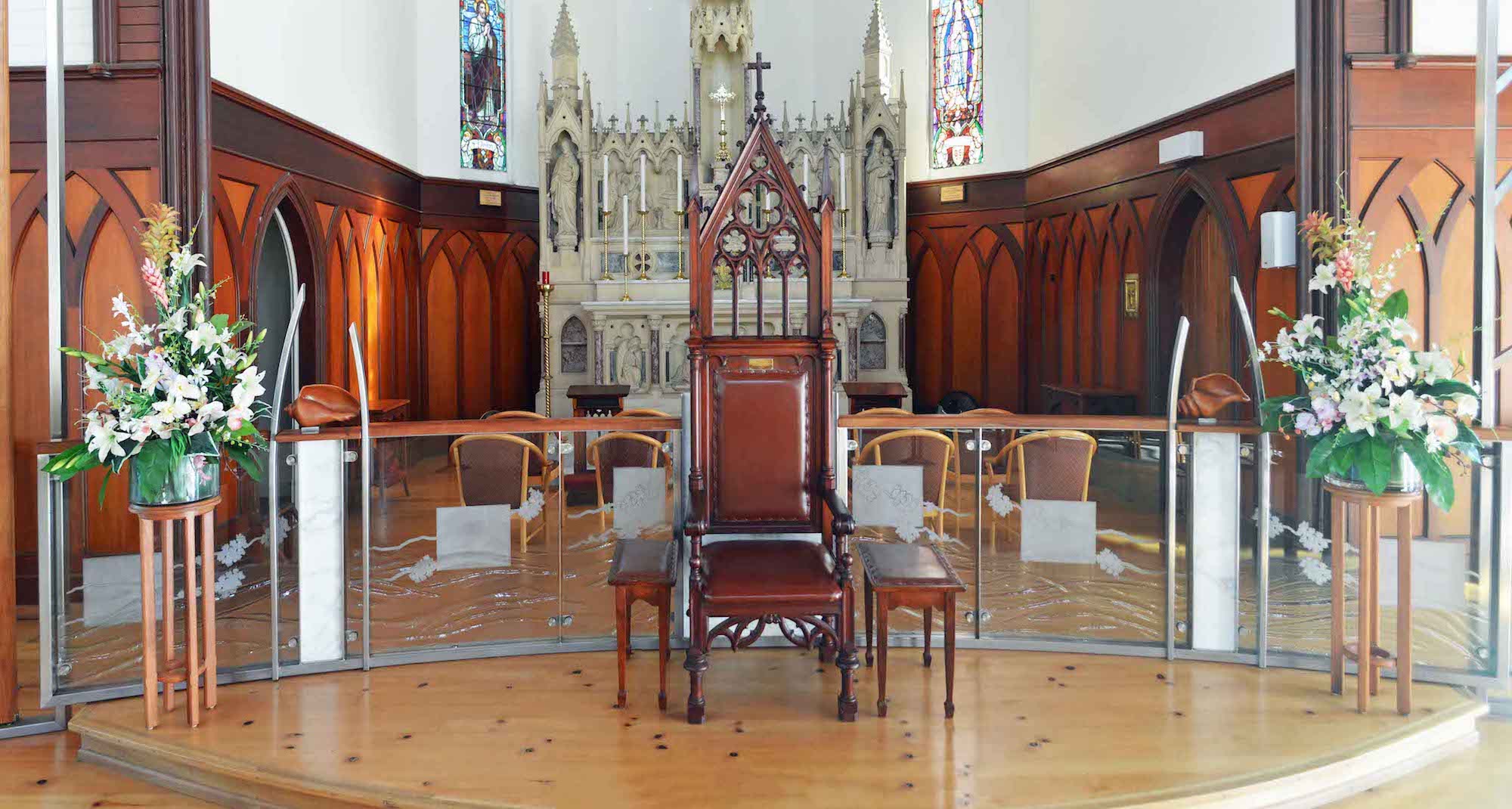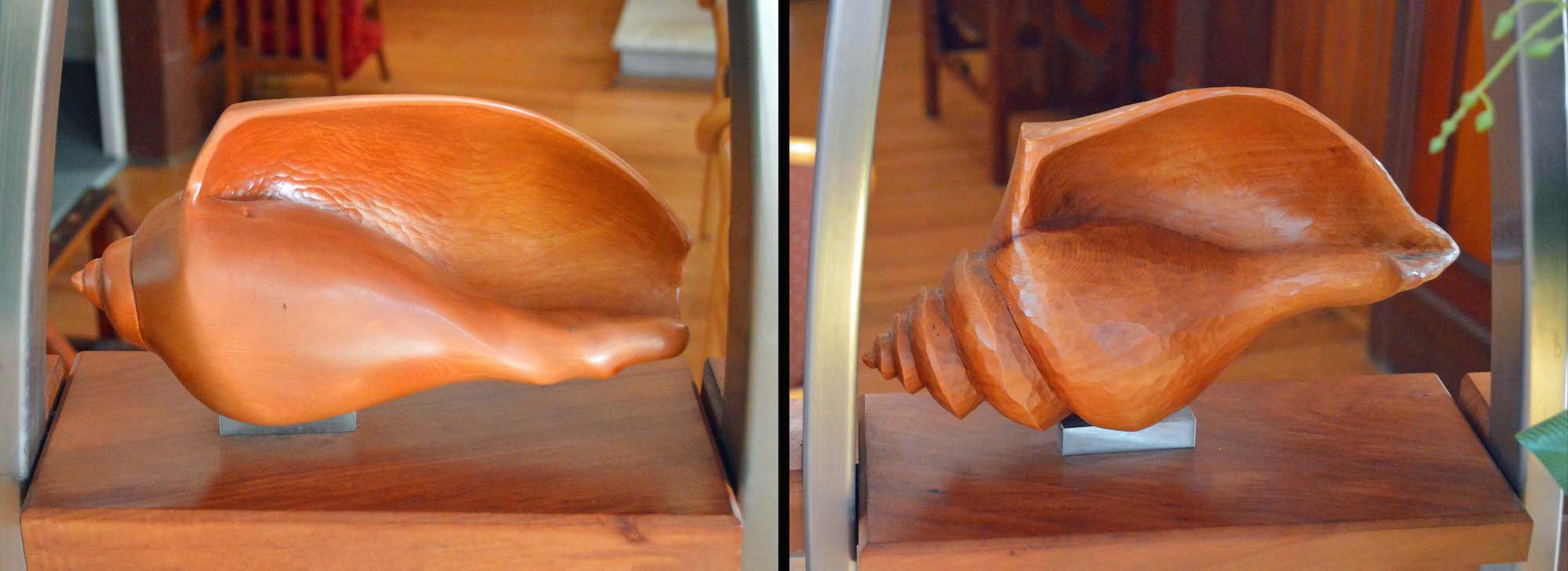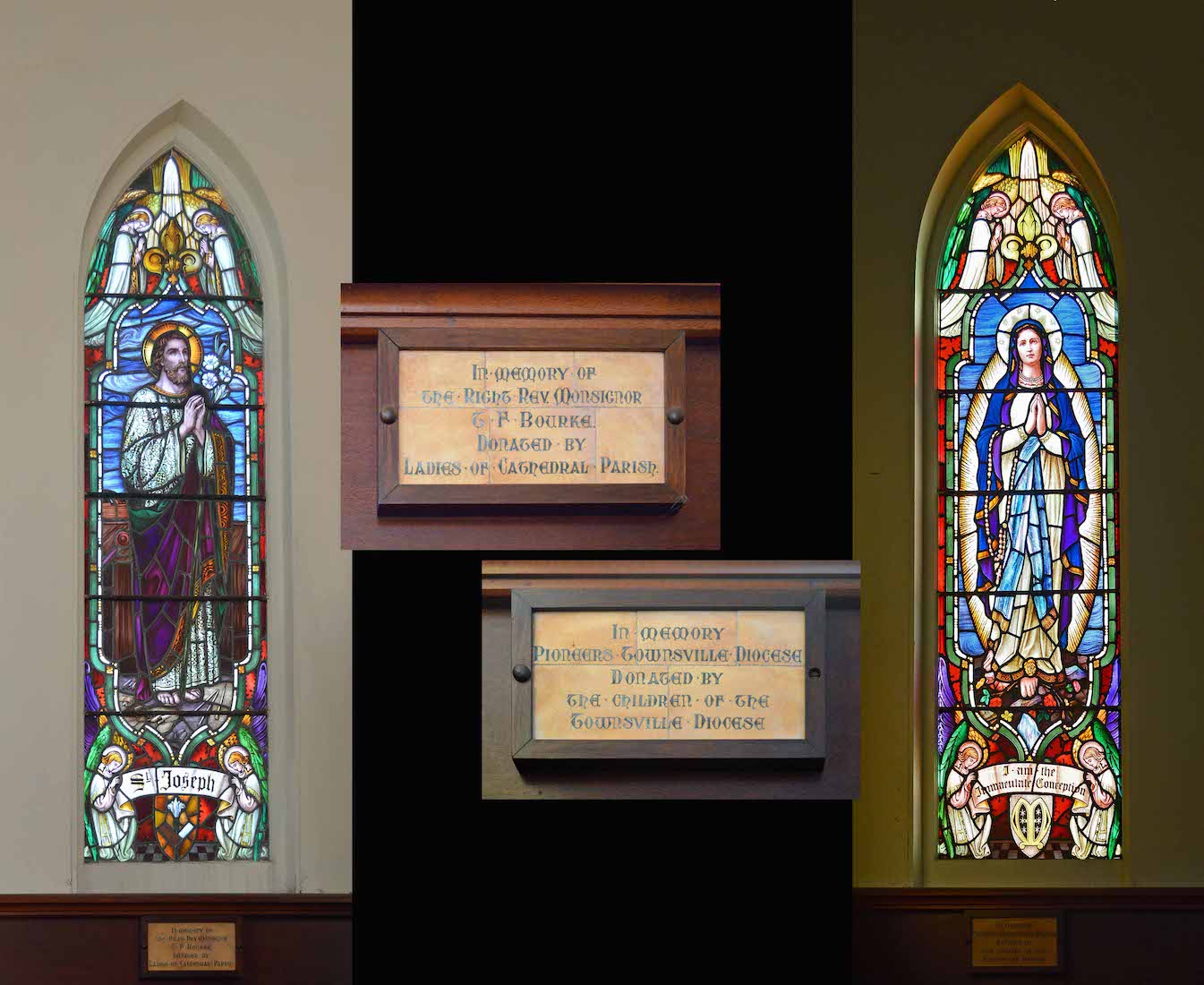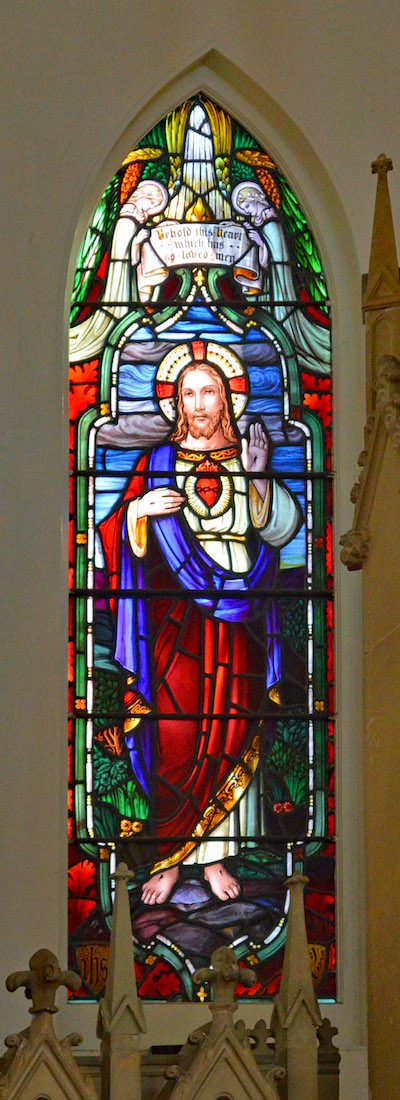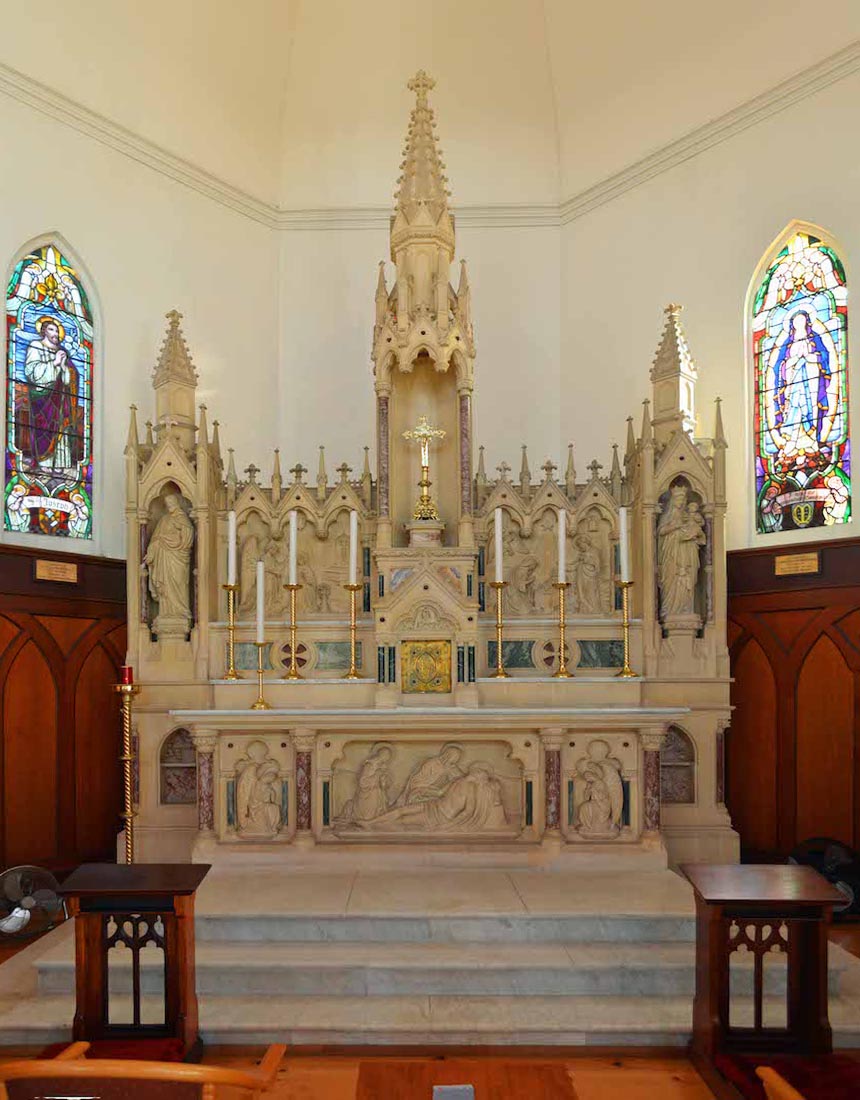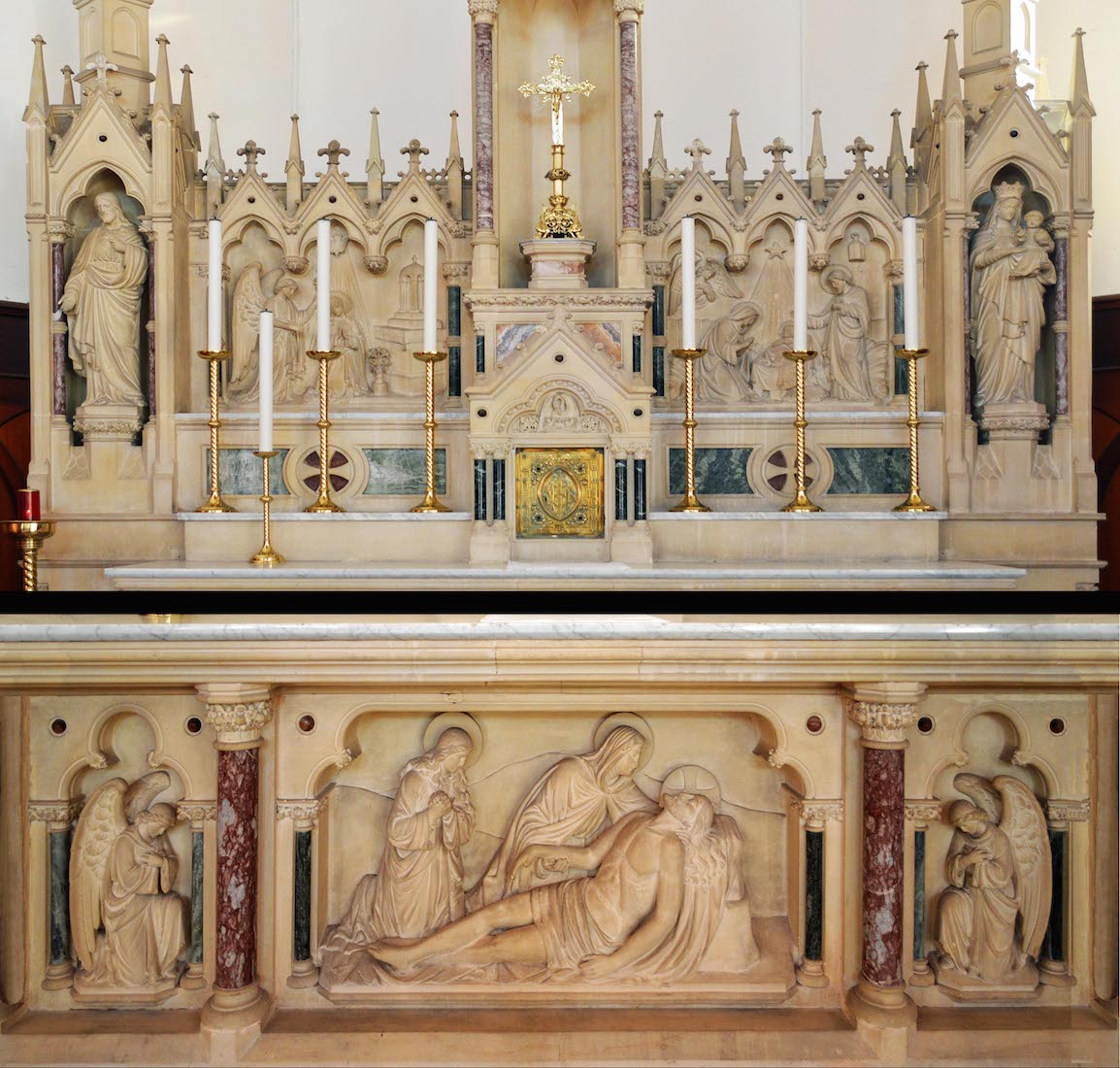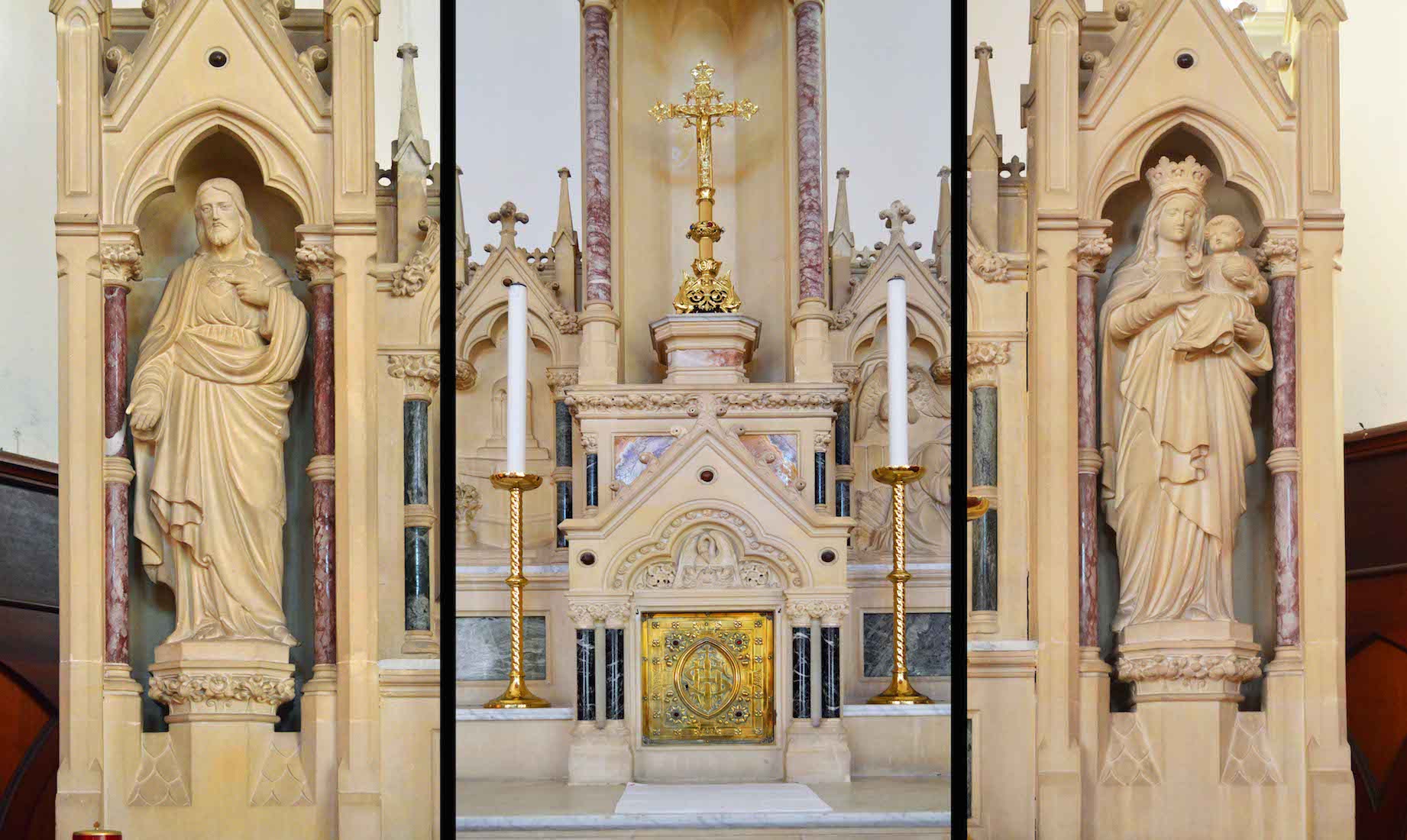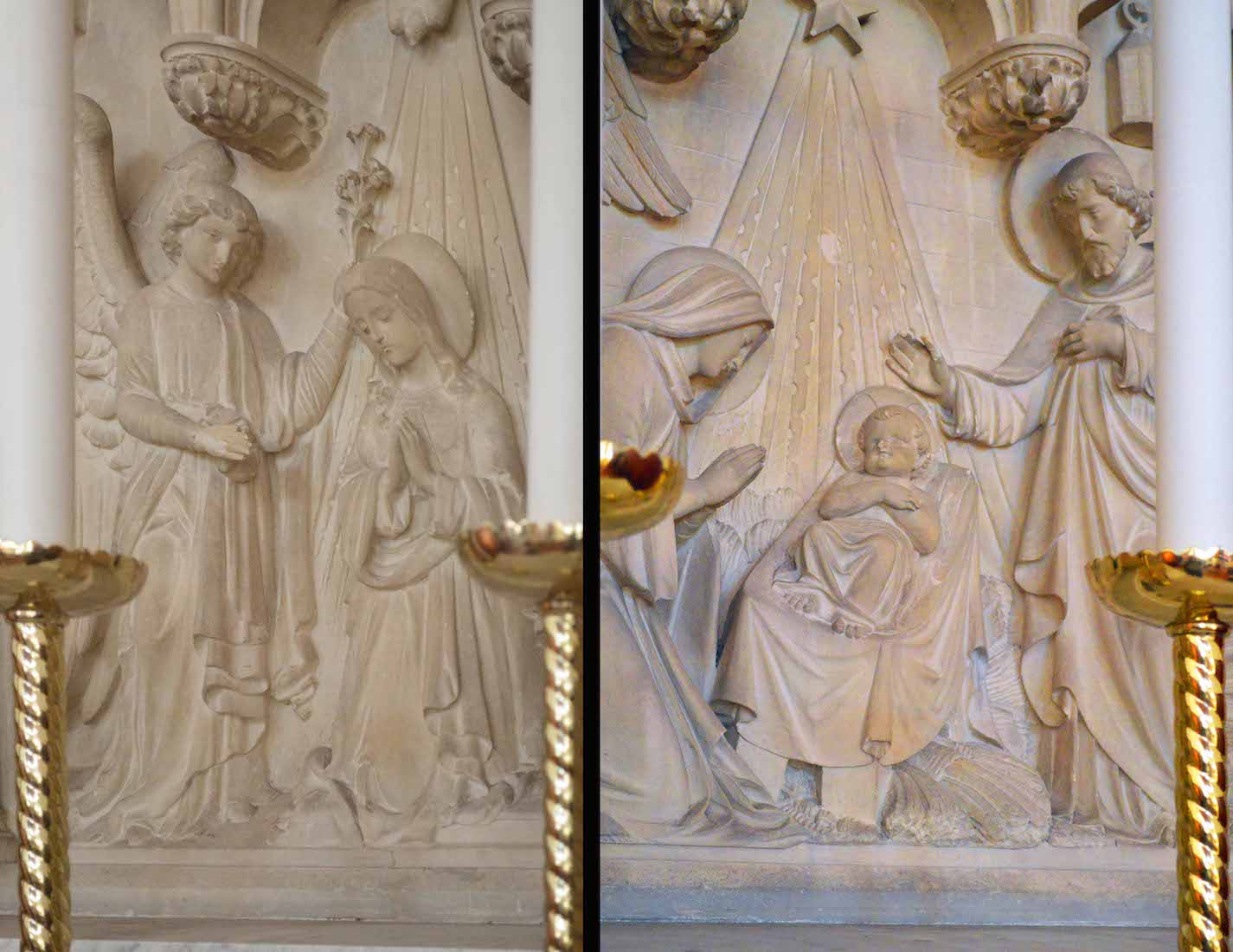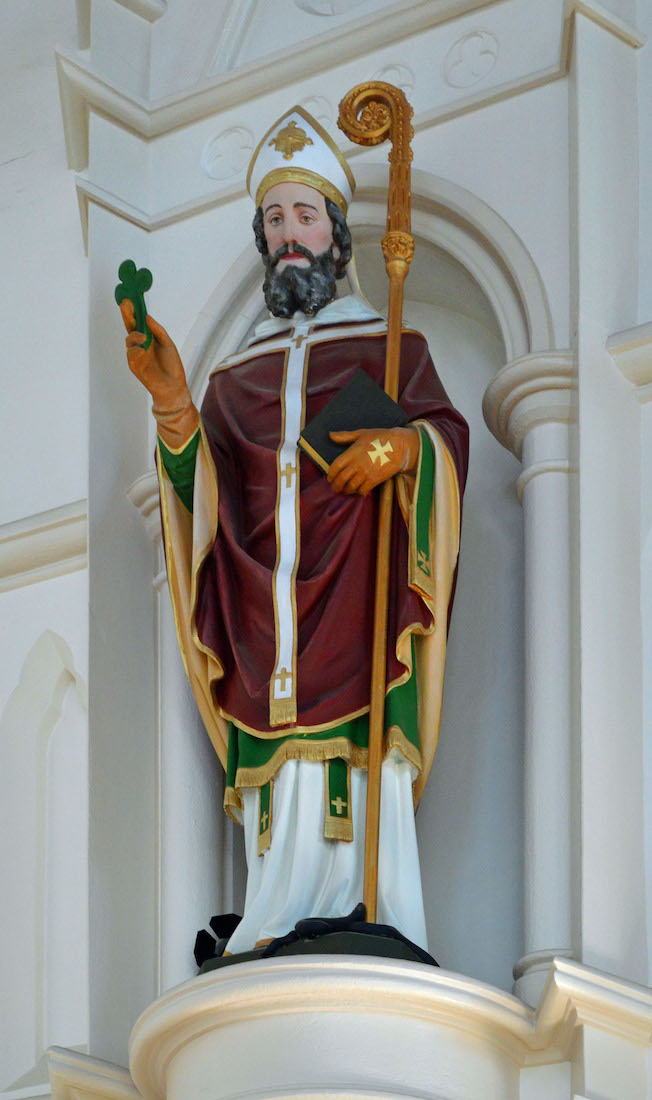
Above the coat of arms stands the figure of St Patrick. St. Patrick was a 5th-century missionary to Ireland and later served as bishop there. He is credited with bringing Christianity to parts of Ireland and was probably partly responsible for the Christianization of the Picts and Anglo-Saxons. He is one of the patron saints of Ireland, and is held in high regard by Roman Catholics around the world. INDEX
42. BAPTISTRY
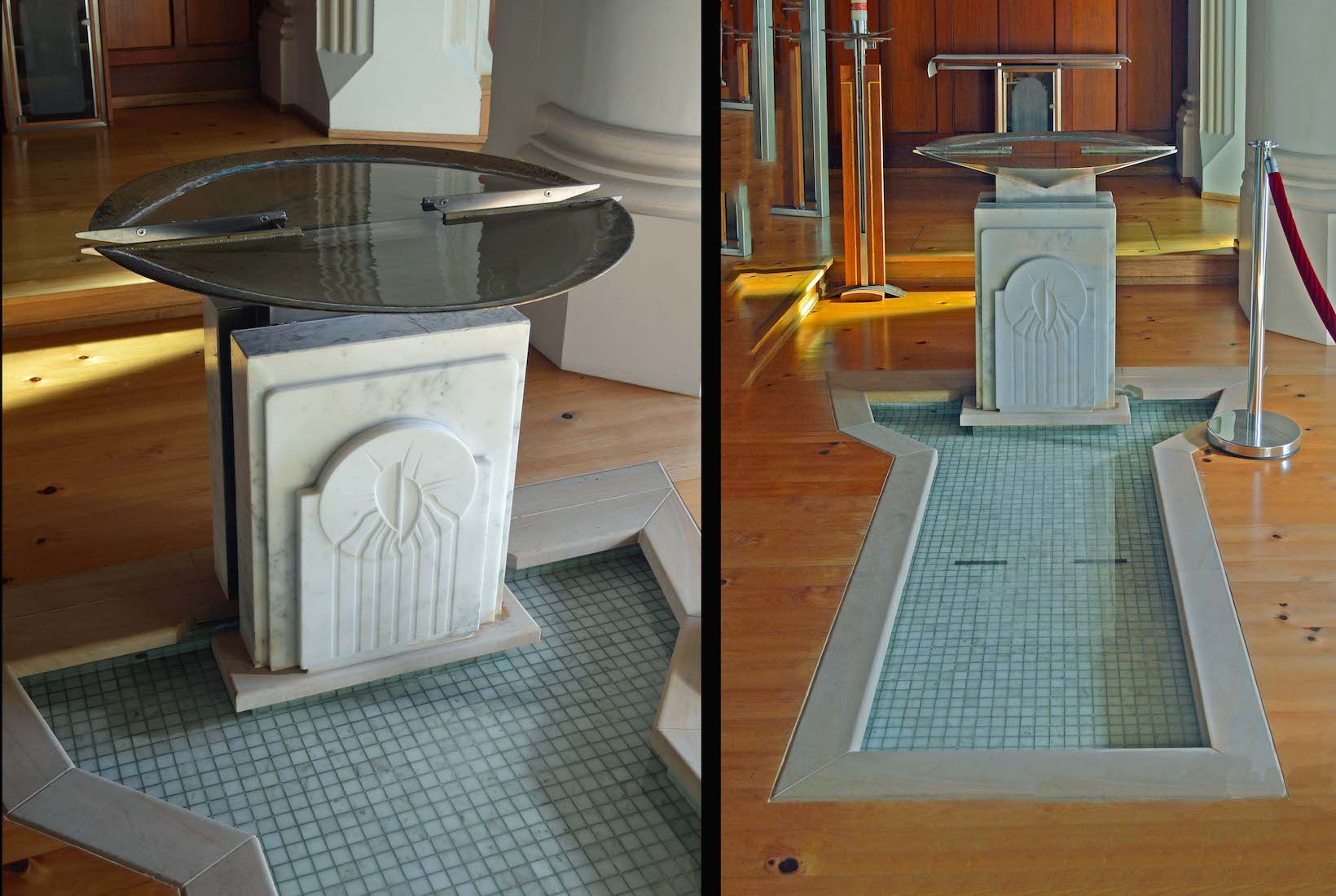
We have already noticed the baptismal font at the West end of the nave. A larger baptistry is placed here near the sanctuary. It appears to have a bowl for baptism by sprinkling, and a larger pool for immersion, but the pool is not deep enough for this. The Sacred Heart symbol can be seen again here.
43. CATHEDRA
The cathedra is the symbolic seat or throne of the Bishop of the Diocese. It signifies the attachment of the Bishop to this particular Church. The word ‘cathedra’ comes from the Latin for ‘seat’ or ‘throne‘, and it is from here that this Church gets the title ‘Cathedral’. This particular cathedra was given by the Sisters of Mercy of the Diocese of Townsville in 1930.
44. INNER SANCTUARY
We now focus more closely on the inner sanctuary in the apse behind the cathedra. The separating railing has two major columns bearing carved sea shells. There is a door on either side leading to the sacristy and robing rooms. There are two (and in fact three) stained glass windows in this apse. And finally the reredos itself contains much interesting detail.
45. SEASHELLS
The reason for positioning these two conch shells is not immediately clear. There are strong Christian connections to the scallop shell which is a symbol for St James. However in Hawaii, blowing the conch shell is a call to the Divine, and it is likely that this meaning is observed on other Pacific Islands in association with the Townsville Diocese.
46. SANCTUARY SIDE WINDOWS
There are two single lancet stained glass windows on the sides of the sanctuary. The window at left depicts St Joseph, with his inevitable sprig of flowers. It was donated by the Ladies of the Diocese. The Virgin Mary is depicted in the window at right. The text underneath reads, ‘I am the Immaculate Conception’, and the window was given by the Children of the Diocese.
47. EAST WINDOW
The East window is unfortunately almost completely hidden by the reredos. It shows Jesus as the Sacred Heart. The text above reads: ‘Behold this heart which has so loved men’, – part of a recorded saying of Jesus to Margaret Mary Alacoque.
48. HIGH ALTAR
The centrepiece of the inner sanctuary is the high altar which is of intricate design. At centre is the golden tabernacle which holds the Reserved Elements of the Eucharist. A golden crucifix stands above this. A figure occupies the alcove at either end, and below the altar shelf is a scene of the body of Jesus being laid in the tomb.
49. REREDOS AND ALTAR DETAIL
This view shows the altar and reredos in greater detail. The lower scene has Jesus being ministered to by his mother Mary, or perhaps Mary Magdalene. Sorrowing angels weep on either side.
50. REREDOS DETAIL
Here we see that the end figures are Jesus as the Sacred Heart at left, and the Virgin Mary carrying the young Jesus at right. The front door of the tabernacle carries the well known IHS Christogram – the letters being the first three letters of ‘Jesus’ in Latinised Greek.
51. ANNUNCIATION AND NATIVITY
Behind the candles are two scenes. At left is the Annunciation, with Archangel Gabriel telling Mary about her coming conception. At right is the Nativity – the birth of Jesus in the stable. This completes our tour of the Sacred Heart Cathedral.
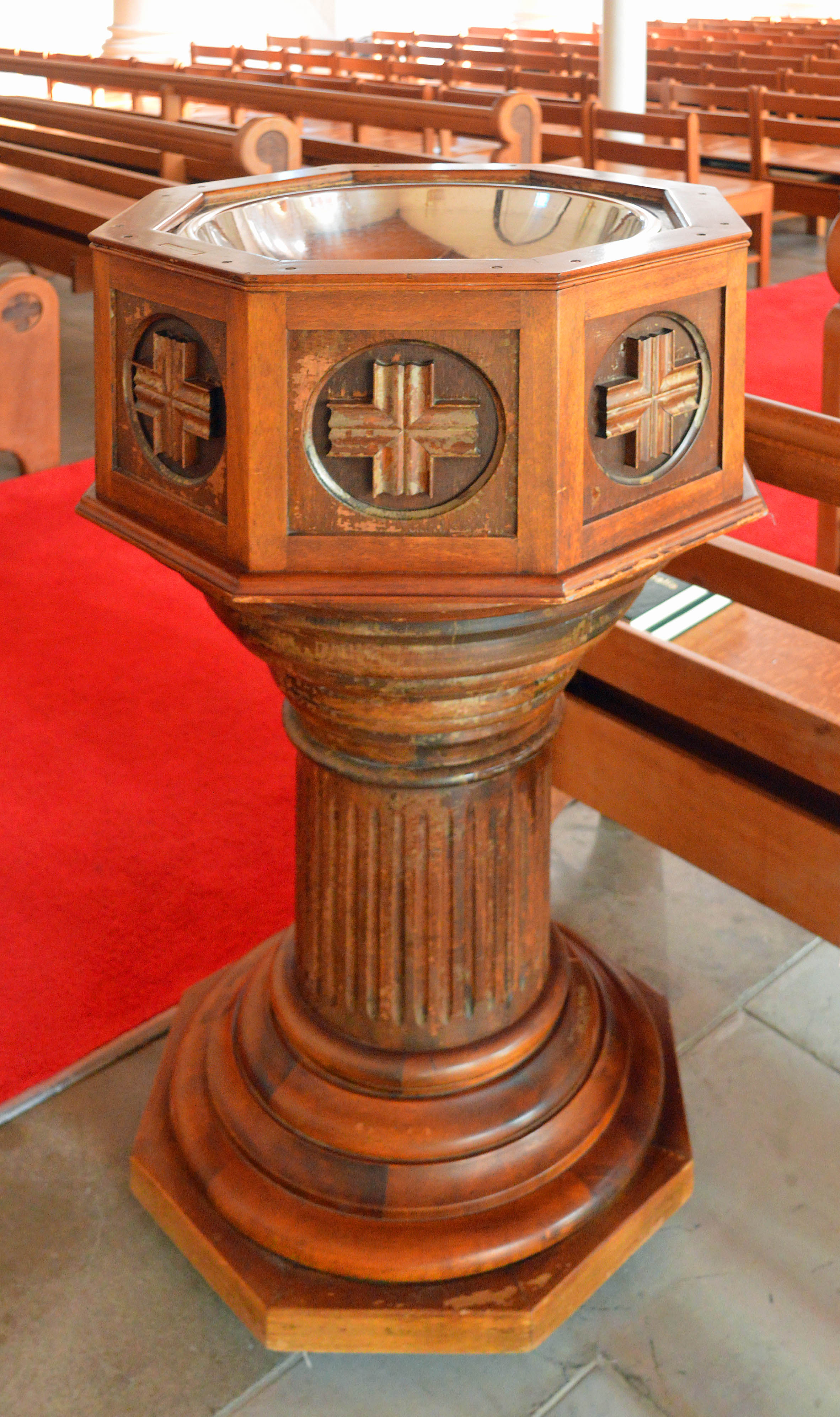
CONCLUSION
I hope you have enjoyed visiting Sacred Heart Cathedral with me.
I am happy to receive constructive comments or corrections concerning this website. The best websites are the ones which have no errors! I am grateful to my wife Margie who has proof-read these pages.
The link for the Cathedral website is:
https://www.tsv.catholic.org.au/sacred-heart-cathedral-parish-sacred-heart-cathedral/
As usual, while the photographs on this site are mine, much of the text has been drawn from other online sources, including Wikipedia, and I gratefully acknowledge this.
The photographs which appear on this site can also be found in higher resolution at:
https://www.flickr.com/photos/paulscottinfo/albums/
Site created 10 / 2019 ; reformatted 12 / 2020
Paul Scott

